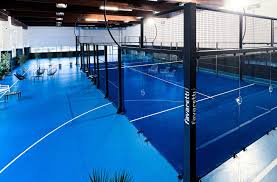

The Structure of a Padel Court An In-Depth Look
Padel is a rapidly growing racquet sport that blends elements of tennis and squash. Originating in Mexico in the 1960s, the game has gained widespread popularity in Europe and beyond, particularly in countries like Spain and Argentina. Central to this sport's appeal are the unique design and structure of the padel court. Understanding the specific characteristics of a padel court can enhance both player and spectator experiences. This article delves into the various components and structural elements of a padel court.
Dimensions and Layout
A standard padel court measures 20 meters long and 10 meters wide, significantly smaller than a tennis court. The dimensions are designed to foster fast-paced, engaging gameplay, as the smaller area encourages a quicker exchange of rallies. The court is divided into two equal halves by a net that stands 88 centimeters high at the center and 92 centimeters at the posts. This net is a fundamental part of the court's layout, acting as a barrier that both promotes and limits aggressive play styles.
Walls and Fencing
One of the defining features of a padel court is the surrounding walls, which are typically 3 to 4 meters high and made of transparent glass or solid materials like concrete. These walls allow the ball to be played off them, much like in squash, adding a strategic dimension to game play. The transparent glass offers an unobstructed view for spectators, making the match simply more enjoyable to watch. Additionally, side fences are necessary to keep the ball within the play area, ensuring that the fast-paced action remains contained.
Court Surface
The surface of a padel court is another critical component. It is usually made of synthetic turf, but options like concrete or asphalt are also used. The turf is designed to provide a certain amount of grip while allowing for quick lateral movements, which are essential in padel. The color of the surface can vary, but the most common is a bright green or blue, providing excellent visibility for players and spectators alike. This vibrant color enhances the aesthetic appeal of the court and ensures that the ball is easily noticeable during play.

Lighting and Amenities
For evening matches and competitions, adequate lighting is essential. Padel courts are often equipped with floodlights positioned strategically to minimize shadows and ensure even illumination across the playing area. This feature allows for extended playing hours and enhances the social experience, as more players can engage with the sport later in the day.
In addition to the gameplay area, a well-structured padel facility often includes amenities such as seating for spectators, changing rooms, and refreshment areas. These facilities deepen the social experience of the sport, allowing players and fans to gather, discuss the game, and build a community around their shared passion.
Accessibility and Safety
An often overlooked aspect of padel court design is accessibility. The best facilities take into account the needs of all players, ensuring that the court is easily accessible for individuals with varying abilities. This may include wheelchair-accessible ramps and pathways, as well as signage that is clear and informative.
Safety is also of paramount importance in the structure of a padel court. High-quality materials must be used to construct the court’s walls and fencing to minimize injury risks. Additionally, the design should consider player movement, with well-defined boundaries to help prevent collisions.
Conclusion
In conclusion, the structure of a padel court is integral to the enjoyment and dynamics of the game. From its dimensions and walls to the surface materials and lighting, every element is meticulously designed to enhance player performance and spectator enjoyment. As padel continues to rise in popularity, understanding the characteristics and intricacies of a padel court becomes even more relevant, whether you're a player, a coach, or a fan. Embracing these aspects not only improves skills and strategies but also fosters a deeper appreciation for this exciting sport. So the next time you step onto a padel court, take a moment to reflect on the design elements that make this game an exhilarating experience.
High-Performance Industrial Flooring Solutions China Paddle Tennis Court for Sale
High-Performance Industrial Flooring Solutions Durable & Cost-Effective
Homogeneous Transparent Floor – Durable & Stylish Rubber Floor Solutions
Premium Homogeneous Transparent Floor for Durable & Stylish Spaces Rubber Floor Solutions
Premium Sports Floor Solutions Durable PVC Sports Floor & Rubber Floor for Gyms
Durable Rubber Composite Floor Premium Rubber Floor & Mats Solutions